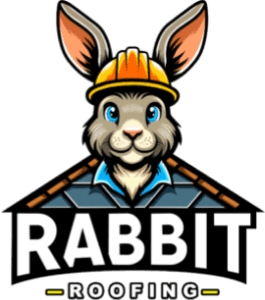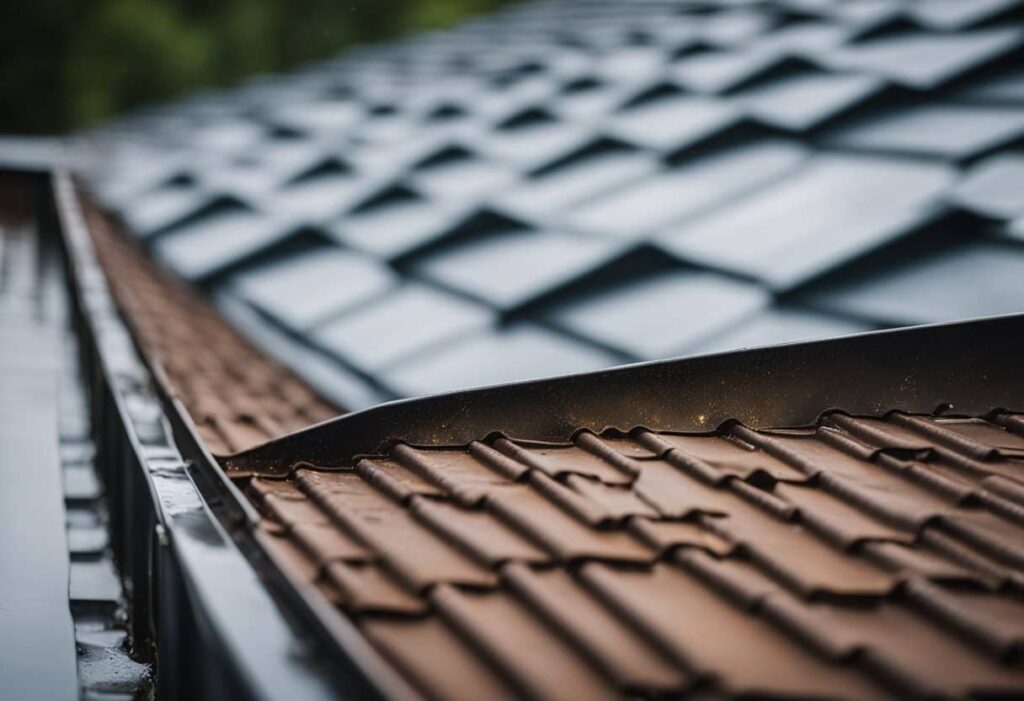Metal roofs have become increasingly popular for their durability, energy efficiency, and modern aesthetic. Despite their many advantages, homeowners often face specific challenges unique to this type of roofing. The biggest problem with metal roofs is oil canning, which refers to the visible waviness and slight distortions in the flat areas of metal panels. This issue not only affects the appearance but also can be a source of concern regarding the material’s structural integrity.

Noise is another significant concern associated with metal roofs. During heavy rain, hailstorms, or when debris like branches fall on the roof, the impact sounds can be amplified, leading to a noisier indoor environment. This problem might necessitate additional soundproofing measures to ensure a comfortable living space.
Maintenance and repair issues, including the difficulty of addressing specific problems like oil canning and noise, can sometimes catch homeowners off guard. For those considering metal roofing, understanding these potential setbacks is essential for making an informed decision.
Fundamentals of Metal Roofing

Metal roofing in has gained popularity due to its durability, versatility, and long lifespan. This section will explore the fundamental aspects, including the types of materials used and the typical longevity of metal roofs.
Understanding Metal Roofing
Metal roofing incorporates various materials such as aluminum, steel, copper, and zinc. Each material offers unique properties, making metal roofs suitable for various climates and architectural styles.
Typically, aluminum is favored in coastal regions due to its resistance to salt corrosion, while steel is valued for its strength and affordability. Copper, known for its aesthetic appeal, develops a patina over time, providing both beauty and protection. Zinc, though less common, offers a long lifespan with minimal maintenance.
A key attribute of metal roofing is its ability to reflect solar heat, potentially reducing cooling costs. Metal roofs are also lightweight, reducing the structural load on the home. Various styles and finishes are available, allowing homeowners to choose options that complement their home’s exterior design.
Metal Roof Lifespan
The average lifespan of a metal roof can range from 40 to 70 years, depending on the material and maintenance. For instance, aluminum and steel roofs typically last between 40 to 60 years. Copper and zinc roofs can exceed 70 years, often outliving the buildings they cover.
Longevity is influenced by factors such as environmental conditions, installation quality, and care. Metal roofs resist common issues like rot, insect damage, and fire, contributing to their extended lifespan. Routine inspections and timely repairs can ensure the roof remains in optimal condition.
Additionally, many metal roofing systems come with warranties ranging from 20 to 50 years, providing further assurance of their durability. This extended lifespan often offsets the higher initial cost compared to traditional roofing materials.
Common Issues with Metal Roofs

Metal roofs offer durability and longevity, but potential issues can arise that homeowners should be aware of. These can range from installation errors to problems like leaks and corrosion.
Installation Problems
Proper installation is crucial for a metal roof’s performance. If the roof is not installed correctly, issues such as uneven panels, misaligned fasteners, and inadequate ventilation can occur.
Incorrect panel placement and improper sealing can cause the roof to underperform. Errors in fastening can lead to loose panels over time, which may cause significant structural issues.
Furthermore, insufficient space for thermal expansion and contraction can result in panel warping. Thus, choosing an experienced installer is critical to prevent these issues.
Risk of Leaks
Despite their strength, metal roofs can be prone to leaks if not adequately maintained. Common areas where leaks may occur include overlaps, fastener points, and around roof penetrations like vents and chimneys.
If metal roof panels are not properly sealed at the overlaps, water can penetrate, leading to leaks. Over time, fasteners can loosen, creating gaps for water to enter.
Regular inspection and maintenance are essential in preventing leaks. Replacing worn seals and tightening fasteners can mitigate leak risks and extend the roof’s lifespan.
Corrosion Concerns
Metal roofs, while generally resistant to the elements, can suffer from corrosion if not properly protected. Corrosion can occur due to exposure to harsh weather conditions, saltwater, or improper material handling.
Galvanized steel and other metal types can corrode without proper coatings. Damage to protective coatings during installation or due to physical damage can lead to rust.
Selecting high-quality materials with suitable protective coatings and ensuring regular roof maintenance can help prevent corrosion and maintain the roof’s integrity.
Advantages vs. Disadvantages of Metal Roofs

Metal roofs offer substantial benefits in terms of durability and energy efficiency, but they also come with notable drawbacks such as higher initial costs and potential corrosion issues in certain environments.
Pros of Metal Roofs
Durability is a significant advantage. Metal roofs can last 40-70 years, far outlasting traditional asphalt shingles, which typically last 15-20 years. This makes them a long-term investment.
Energy Efficiency is another benefit. Metal roofs reflect solar radiant heat, reducing cooling costs by 10-25%. This can be especially beneficial in hot climates. Some metal roofs are also made from recycled materials and are fully recyclable at the end of their lifespan.
Low Maintenance is a key advantage. Unlike other roofing materials that may crack or require frequent replacement, metal roofs withstand harsh weather conditions without needing regular maintenance.
Cons of Metal Roofs
High Upfront Costs can be a significant drawback. The installation cost of a metal roof can range in thousands of dollars for a standing seam metal roof. This is considerably higher than asphalt shingles.
Noise can also be a concern. Rainfall and hail may create more noise on a metal roof compared to other materials. This can be mitigated with proper insulation, but it’s an aspect worth considering, especially in areas with frequent storms.
Corrosion and Rusting are potential issues, particularly in coastal environments. Salt in the air can cause metal roofs to rust. Protective coatings can help, but they might require reapplication over time.
Comparisons with Other Roofing Materials
Asphalt Shingles are cheaper initially, costing much less per square foot. However, they have a shorter lifespan and require more frequent maintenance, making them less cost-effective in the long run.
Wood Shakes offer a natural look but lack the durability of metal roofs. They are more susceptible to fire and may need more maintenance to prevent rot and pest issues.
Tile Roofs provide longevity comparable to metal roofs but are significantly heavier. This may require structural reinforcement, adding to the overall cost. Tiles can also break under heavy impact, whereas metal roofs are more impact-resistant.
For homeowners considering durability, longevity, and energy savings, metal roofs present a worthwhile investment despite their higher initial costs and potential noise issues.
Considerations Before Choosing a Metal Roof
When selecting a metal roof, it’s important to evaluate specific attributes to ensure it fits your needs. Consider both electrical conductivity and environmental factors.
Electrical Conductivity
Metal roofs are excellent conductors of electricity. This raises concerns about lightning strikes. Contrary to popular belief, metal roofs do not attract lightning but if struck, they can safely disperse the energy through the structure provided proper grounding is in place.
Homeowners considering adding a metal roof should check for local building codes related to lightning protection. This requires understanding if additional safety measures like grounding rods or surge protectors are needed.
Environmental Factors
Environmental factors, including climate and weather patterns, significantly impact the suitability of metal roofs. In harsh weather conditions, metal roofs offer unique benefits such as durability and resistance to wind and rain.
In areas prone to frequent hailstorms, snow, or high winds, metal roofs are a durable choice. However, environments with high levels of acid rain might affect the metal over time, requiring additional maintenance or protective coatings.
Understanding these factors helps in making an informed decision whether a metal roof is the right option.
Rabbit Roofing – Premier Metal Roof Installation in Tampa
Rabbit Roofing is renowned as the premier provider of metal roof installation in Tampa Bay, FL. With a reputation built on excellence and reliability, our team of expert metal roof installers in Tampa ensures each project is completed with precision and care. We specialize in delivering top-notch metal roof solutions that are not only durable and weather-resistant but also aesthetically pleasing. Trust Rabbit Roofing for all your metal roof installation needs in Tampa, and experience unparalleled quality and service that sets us apart from the rest.

